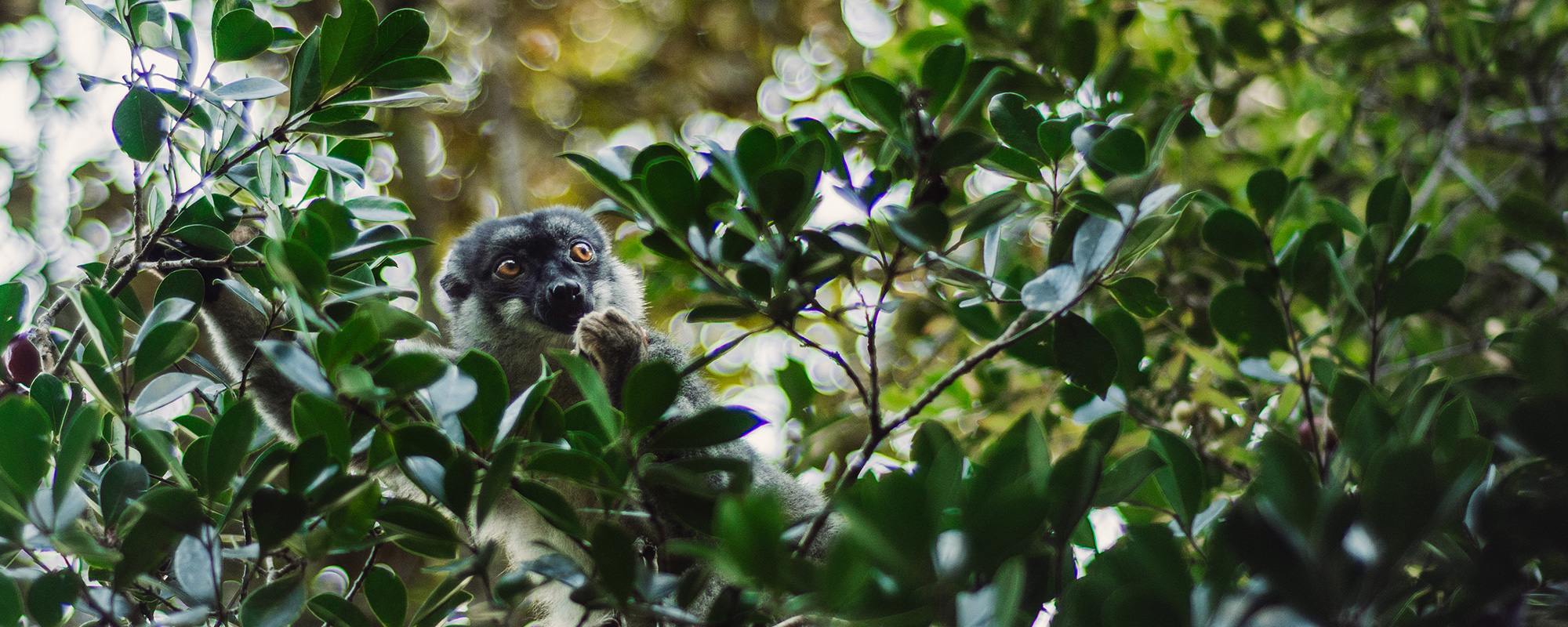- 1300 761 980

Its common knowledge which animals make up Africa’s famous “Big 5”, but what about the animals that aren’t so legendary? This month we take a look at the top 10 of Africa’s most unusual wildlife. Learn which animals make up part of this lesser known collection, where you can find them and what to expect…
Found in Southern and Eastern Africa, the Greater Kudu – a species of antelope, is characterised by distinct white stripes on its back, large ears and the spiralling horns on the males; the longest horns of all African antelopes; if you were to straighten out one of a Greater Kudu’s horns, it would on average be roughly 120cm. Females are significantly smaller than the males but look relatively the same except without horns.
The Greater Kudu is found in woodlands and grasslands, near riverbeds. The best place to see these striking animals is South Africa.
One of Africa’s most unique birds, the Greater Crowned Crane is found in warmer parts of Africa. From eastern Africa, Uganda and Kenya to Eastern South Africa. They are most abundant in Uganda, Kenya and Tanzania.
One of the most easily recognisable birds in Africa, the Grey Crowned Crane stands at over a metre tall, it has a light grey body with white wings, and a red gular pouch und their chin. Their “crown” is made of stiff golden feathers and they have small red patches on their cheeks.
Unlike a lot of other species, Grey Crowned Cranes appear to mate for life; during mating season, males and females are seen engaging in a “nuptial dance” involving jumping as well as various bobbing and bowing movements.
They’re usually found in grasslands near bodies of water. Particularly during nesting season, they stay amongst the long grass near water that provides cover and protection from predators.
Likely better known after the release of the successful movie franchise “ Madagascar”, Lemurs are a unique species of primitive primate, with subspecies varying in size and colour from reddish brown to grey.
Found only in Madagascar, lemurs are very social. These clever creatures have adapted over the years to match their environment. 2,000 years ago there lived an Archaeoindris – the largest lemur, almost resembling a gorilla, it weighed between 160kg and 200kg.
Nowadays lemurs are significantly smaller, with the smallest being the pygmy mouse lemur; only 28 grams, and the largest ones, the Indri and Diademed Sifaka lemurs, that can weigh up to 6.8 kg.
Lemurs are only found in Madagascar and their biggest threat is habitat loss, with locals clearing out more and more land for agricultural use.
One of the oldest mammals on earth, the Okapi looks like what could be a cross between a zebra and a giraffe. Roughly the size of a horse, Okapis have chocolate brown fur with black and white striped legs like a zebra and relatively long necks and long tongues, like giraffes.
The Okapi is solitary, shy and elusive, calling the forests of the Democratic Republic of Congo, home. The Okapi population is endangered and continues to drop.
Weighing an average of 13kg, the African civet is the largest of the African Viverrids. Its body, features dark stripes and patches, with dark horizontal stripes on its hind legs. You will see spots and blotches on the mid-section and vertical stripes on the forelimbs. The tail is slightly bushy and has black bands with a black tip. The markings on their faces are similar to that of a racoon with a black mask around the eyes. Civets have a short mane along their backs that stands when they feel excited or threatened which causes them animal to look much larger.
These elusive nocturnal animals can be spotted in the savannahs and forests of southern and central Africa. The best place to see them is in South Africa’s Kruger National Park.
As the name suggests, this species of fox is characterised by its extremely large ears relative to its head. They have yellow-brown fur with lighter fur on their necks and belly.
Their enormous ears aren’t just for show; they have an incredible sense of hearing – they can hear even the quietest of sounds like beetle larvae hatching. They have many predators but due to their remarkable agility and speed they can dodge predators through changing direction without loosing speed.
Mostly active at night, Bat Eared Foxes have two distinct populations, in East Africa and Southern Africa. The best places to see them are drier regions with short-grass plains and grassy deserts.
Hartebeests can be identified by their fawn colour, long back legs and an elongated snout. They are one of the fastest antelopes; reaching speeds of up to 70km/h.
The increase in agriculture particularly, cattle raising, has affected the Hartebeest population. Because they feed pretty much just on grass, Hartebeests have ended up competing with cattle for food. You can find them in sub Saharan Africa in open plains and grasslands.
The Pangolin are critically endangered and the world’s most trafficked animal. With such a declining population, its getting harder and harder to see them in the wild. Read our Pangolin blog to find out more about this incredible animal and what you can do to help save it.
The name “Aardvark” is derived from South Africa’s Afrikaans language. The translation is “earth pig”. The name pays homage to the Aardvark’s pig like snout that protrudes from their elongated head. Their long tubular ears are also similar to the pig and can be folded and closed. They have a short neck and a large virtually hairless body with an arched back. Their hind legs are longer than their front ones.
Despite appearances, the Aardvark is no relation of the Anteater. In fact, the Aardvark belongs to the same group of mammals as the African elephant.
Aardvarks are fairly easygoing when it comes to climate and habitat. You can find them in a range of regions, from dry savannahs through to rainforests. Aardvarks can be found wherever there are enough termites for food, and soft ground for burrowing.
The African Wild Dog, also known as the African painted dog. This name acquired due to its colourful patchy coat, large bat like ears and bushy tail. Although called a wild dog, you’ll find it resembles a wolf more than a dog.
African Wild dogs were once widely distributed throughout sub-Saharan Africa, with a population in excess of 500,000. However, there are approximately 6,000 living in the wild. For over 20 years, the African Wild Dog has been classified as endangered.
Although the population is fairly small, if you do see an African Wild Dog, it is likely you will see more in the same area. This is because African Wild Dogs travel in packs in numbers from 6 to 20 and sometimes more.
There are hundreds of wild dogs in the big game reserves like Selous in Tanzania and Chobe and Moremi in Botswana. The best place to see them is actually in smaller areas like Madikwe Game Reserve in South Africa. Home to 2 or 3 packs, because the area is so much smaller, guides are able to track the dogs and thus you have a much higher chance of seeing them.
Suite 2, 1st Floor
261-271 Wattletree Rd
Malvern VIC 3144



For tailor-made itineraries or enquiries…